Bike Helmets
- - 32 %new
 POCTectal Bike Helmet Hydrogen White MattMSRP 189,95 €129,95 €Available Sizes:SML
POCTectal Bike Helmet Hydrogen White MattMSRP 189,95 €129,95 €Available Sizes:SML - - 40 %new
 POCKortal Bike Helmet Uranium Black / Epidote Green Metallic / MattMSRP 199,95 €119,95 €Available Sizes:XSLXXL
POCKortal Bike Helmet Uranium Black / Epidote Green Metallic / MattMSRP 199,95 €119,95 €Available Sizes:XSLXXL - - 29 %new
 POCTectal Race MIPS Bike Helmet Uranium Black / Sapphire Purple Metallic / MattMSRP 239,95 €169,95 €Available Sizes:SML
POCTectal Race MIPS Bike Helmet Uranium Black / Sapphire Purple Metallic / MattMSRP 239,95 €169,95 €Available Sizes:SML - - 43 %new
 POCAxion Bike Helmet Himalayan Salt MattMSRP 149,95 €84,95 €Available Sizes:SML
POCAxion Bike Helmet Himalayan Salt MattMSRP 149,95 €84,95 €Available Sizes:SML - - 11 %new
 UvexI-VO CC Bike Helmet White MattMSRP 89,95 €79,95 €Available Sizes:5760
UvexI-VO CC Bike Helmet White MattMSRP 89,95 €79,95 €Available Sizes:5760 - - 29 %
 DynafitTLT Ski Touring Helmet FrostMSRP 139,95 €99,95 €Available Sizes:S/M
DynafitTLT Ski Touring Helmet FrostMSRP 139,95 €99,95 €Available Sizes:S/M
- new
 UvexKid 3 Bike Helmet Dirtbike Gray/Lime Kids49,95 €Available Sizes:5558
UvexKid 3 Bike Helmet Dirtbike Gray/Lime Kids49,95 €Available Sizes:5558 - new
 POCVentral Air MIPS Bike Helmet Hydrogen White Matt259,95 €Available Sizes:SML
POCVentral Air MIPS Bike Helmet Hydrogen White Matt259,95 €Available Sizes:SML - - 50 %new
 POCTectal Race Spin Bike Helmet Uranium Black / Hydrogen WhiteMSRP 229,95 €114,95 €Available Sizes:S
POCTectal Race Spin Bike Helmet Uranium Black / Hydrogen WhiteMSRP 229,95 €114,95 €Available Sizes:S - - 20 %
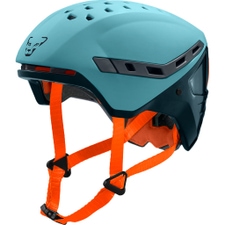 DynafitTLT Ski Touring Helmet Storm BlueMSRP 149,95 €119,95 €Available Sizes:S/M
DynafitTLT Ski Touring Helmet Storm BlueMSRP 149,95 €119,95 €Available Sizes:S/M
- - 30 %
 AlpinaMythos 3.0 LE Bike Helmet Black MattMSRP 99,95 €69,95 €Available Sizes:62
AlpinaMythos 3.0 LE Bike Helmet Black MattMSRP 99,95 €69,95 €Available Sizes:62
- - 11 %new
 UvexFinale 2.0 Bike Helmet Black MattMSRP 139,95 €124,95 €Available Sizes:5761
UvexFinale 2.0 Bike Helmet Black MattMSRP 139,95 €124,95 €Available Sizes:5761 - - 10 %new
 GiroAgilis MIPS Bike Helmet Matte BlackMSRP 114,95 €103,45 €Available Sizes:ML
GiroAgilis MIPS Bike Helmet Matte BlackMSRP 114,95 €103,45 €Available Sizes:ML - new
 POCOmne Air MIPS Bike Helmet Hydrogen White179,95 €Available Sizes:SML
POCOmne Air MIPS Bike Helmet Hydrogen White179,95 €Available Sizes:SML - - 10 %new
 GiroAgilis MIPS Bike Helmet Matte WhiteMSRP 114,95 €103,45 €Available Sizes:SML
GiroAgilis MIPS Bike Helmet Matte WhiteMSRP 114,95 €103,45 €Available Sizes:SML - - 20 %
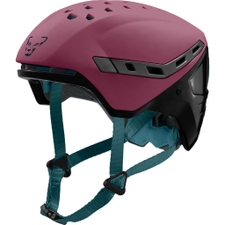 DynafitTLT Ski Touring Helmet BurgundyMSRP 149,95 €119,95 €Available Sizes:LXLS/M
DynafitTLT Ski Touring Helmet BurgundyMSRP 149,95 €119,95 €Available Sizes:LXLS/M
- - 12 %new
 SmithConvoy MIPS Bike Helmet WhiteMSRP 84,95 €74,95 €Available Sizes:555962
SmithConvoy MIPS Bike Helmet WhiteMSRP 84,95 €74,95 €Available Sizes:555962 - - 50 %
 UvexTested product Quatro CC Bike Helmet Oak Brown / Black MattMSRP 129,95 €64,95 €Available Sizes:61
UvexTested product Quatro CC Bike Helmet Oak Brown / Black MattMSRP 129,95 €64,95 €Available Sizes:61 - - 8 %new
 UvexI-VO CC Mips Bike Helmet Midnight / Silver MattMSRP 119,95 €109,95 €Available Sizes:5760
UvexI-VO CC Mips Bike Helmet Midnight / Silver MattMSRP 119,95 €109,95 €Available Sizes:5760 - - 44 %new
 POCTectal Bike Helmet Epidote Green Metallic / MattMSRP 179,95 €99,95 €Available Sizes:S
POCTectal Bike Helmet Epidote Green Metallic / MattMSRP 179,95 €99,95 €Available Sizes:S - - 20 %
 DynafitTLT Ski Touring Helmet Winter MossMSRP 149,95 €119,95 €Available Sizes:S/M
DynafitTLT Ski Touring Helmet Winter MossMSRP 149,95 €119,95 €Available Sizes:S/M
- new
 UvexKid 3 Bike Helmet Pink Flower Kids49,95 €Available Sizes:55
UvexKid 3 Bike Helmet Pink Flower Kids49,95 €Available Sizes:55 - new
 POCOmne Air MIPS Bike Helmet Uranium Black Matt179,95 €Available Sizes:SML
POCOmne Air MIPS Bike Helmet Uranium Black Matt179,95 €Available Sizes:SML - - 14 %new
 AlpinaCarapax 2.0 Bike Helmet Orchid Matt WomenMSRP 139,95 €119,95 €Available Sizes:57
AlpinaCarapax 2.0 Bike Helmet Orchid Matt WomenMSRP 139,95 €119,95 €Available Sizes:57 - - 50 %
 UvexTested product Finale 2.0 Bike Helmet Teal Blue MatMSRP 129,95 €64,95 €Available Sizes:57
UvexTested product Finale 2.0 Bike Helmet Teal Blue MatMSRP 129,95 €64,95 €Available Sizes:57 - - 10 %new
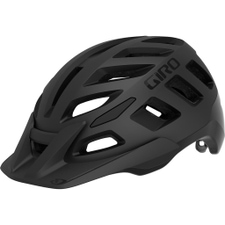 GiroRadix Bike Helmet Matte BlackMSRP 109,95 €98,95 €Available Sizes:SMLXL
GiroRadix Bike Helmet Matte BlackMSRP 109,95 €98,95 €Available Sizes:SMLXL - - 20 %
 DynafitTLT Ski Touring Helmet Marine BlueMSRP 149,95 €119,95 €Available Sizes:S/M
DynafitTLT Ski Touring Helmet Marine BlueMSRP 149,95 €119,95 €Available Sizes:S/M
- new
 POCVentral Air MIPS Bike Helmet Uranium Black Matt259,95 €Available Sizes:SML
POCVentral Air MIPS Bike Helmet Uranium Black Matt259,95 €Available Sizes:SML - new
 POCCoron Air MIPS Bike Helmet Uranium Black329,95 €Available Sizes:SML
POCCoron Air MIPS Bike Helmet Uranium Black329,95 €Available Sizes:SML - - 8 %new
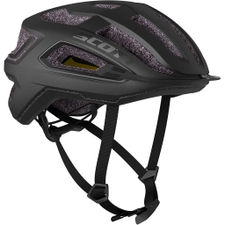 ScottARX Plus Bike Helmet Granite BlackMSRP 119,95 €109,95 €Available Sizes:SML
ScottARX Plus Bike Helmet Granite BlackMSRP 119,95 €109,95 €Available Sizes:SML - - 8 %new
 UvexI-VO CC Mips Bike Helmet Pigeon Grey MattMSRP 119,95 €109,95 €Available Sizes:5760
UvexI-VO CC Mips Bike Helmet Pigeon Grey MattMSRP 119,95 €109,95 €Available Sizes:5760 - new
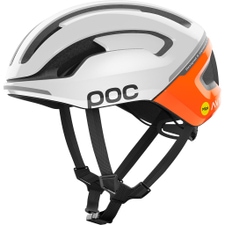 POCOmne Air MIPS Bike Helmet Fluorescent Orange179,95 €Available Sizes:SML
POCOmne Air MIPS Bike Helmet Fluorescent Orange179,95 €Available Sizes:SML - - 14 %new
 AlpinaCarapax 2.0 Bike Helmet Moon / Grey / Peach MattMSRP 139,95 €119,95 €Available Sizes:5762
AlpinaCarapax 2.0 Bike Helmet Moon / Grey / Peach MattMSRP 139,95 €119,95 €Available Sizes:5762 - new
 Sweet ProtectionFalconer 2Vi MIPS Bike Helmet Satin White248,95 €Available Sizes:SML
Sweet ProtectionFalconer 2Vi MIPS Bike Helmet Satin White248,95 €Available Sizes:SML - - 36 %new
 SmithConvoy MIPS Bike Helmet PoolMSRP 69,95 €44,95 €Available Sizes:59
SmithConvoy MIPS Bike Helmet PoolMSRP 69,95 €44,95 €Available Sizes:59 - - 13 %new
 AlpinaCarapax Jr. Bike Helmet Indigo Matt KidsMSRP 74,95 €64,95 €Available Sizes:56
AlpinaCarapax Jr. Bike Helmet Indigo Matt KidsMSRP 74,95 €64,95 €Available Sizes:56 - - 44 %new
 POCKortal Race MIPS Bike Helmet Cerussite Kashima / Uranium Black MetMSRP 249,95 €139,95 €Available Sizes:XSL
POCKortal Race MIPS Bike Helmet Cerussite Kashima / Uranium Black MetMSRP 249,95 €139,95 €Available Sizes:XSL - - 10 %new
 SmithMainline MIPS Bike Helmet Matte BlackMSRP 309,95 €279,95 €Available Sizes:555962
SmithMainline MIPS Bike Helmet Matte BlackMSRP 309,95 €279,95 €Available Sizes:555962 - - 18 %new
 SmithSession MIPS Bike Helmet Matte BlackMSRP 169,95 €139,95 €Available Sizes:555962
SmithSession MIPS Bike Helmet Matte BlackMSRP 169,95 €139,95 €Available Sizes:555962 - - 11 %new
 UvexI-VO CC Bike Helmet Grey / Rose Matt WomenMSRP 89,95 €79,95 €Available Sizes:57
UvexI-VO CC Bike Helmet Grey / Rose Matt WomenMSRP 89,95 €79,95 €Available Sizes:57 - new
 Sweet ProtectionOutrider MIPS Bike Helmet Matte Black148,95 €Available Sizes:ML
Sweet ProtectionOutrider MIPS Bike Helmet Matte Black148,95 €Available Sizes:ML - - 10 %new
 ScottCentric Plus Bike Helmet White / BlackMSRP 199,95 €179,95 €Available Sizes:ML
ScottCentric Plus Bike Helmet White / BlackMSRP 199,95 €179,95 €Available Sizes:ML - - 11 %new
 UvexI-VO CC Bike Helmet Red / Black MattMSRP 89,95 €79,95 €Available Sizes:5760
UvexI-VO CC Bike Helmet Red / Black MattMSRP 89,95 €79,95 €Available Sizes:5760 - new
 POCKortal Race MIPS Bike Helmet Hydrogen White/ Uranium Black Matt269,95 €Available Sizes:XSLXXL
POCKortal Race MIPS Bike Helmet Hydrogen White/ Uranium Black Matt269,95 €Available Sizes:XSLXXL - - 50 %
 UvexTested product Access Bike Helmet Black MattMSRP 89,95 €44,95 €Available Sizes:5762
UvexTested product Access Bike Helmet Black MattMSRP 89,95 €44,95 €Available Sizes:5762 - - 10 %new
 UvexQuatro CC Mips Bike Helmet All Black MattMSRP 149,95 €134,95 €Available Sizes:5761
UvexQuatro CC Mips Bike Helmet All Black MattMSRP 149,95 €134,95 €Available Sizes:5761 - new
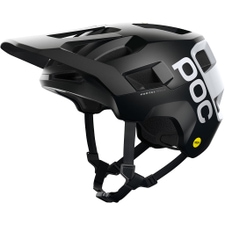 POCKortal Race MIPS Bike Helmet Uranium Black Matt / Hydrogen White269,95 €Available Sizes:XSLXXL
POCKortal Race MIPS Bike Helmet Uranium Black Matt / Hydrogen White269,95 €Available Sizes:XSLXXL - - 10 %new
 GiroAgilis MIPS Bike Helmet Matte Black / Bright RedMSRP 114,95 €103,45 €Available Sizes:SML
GiroAgilis MIPS Bike Helmet Matte Black / Bright RedMSRP 114,95 €103,45 €Available Sizes:SML - - 40 %new
 POCCrane MIPS Bike Helmet Axinte Brown MattMSRP 99,95 €59,95 €Available Sizes:XSXXL
POCCrane MIPS Bike Helmet Axinte Brown MattMSRP 99,95 €59,95 €Available Sizes:XSXXL - - 10 %new
 SmithForefront 2 MIPS Bike Helmet Matte BlackMSRP 249,95 €224,95 €Available Sizes:555962
SmithForefront 2 MIPS Bike Helmet Matte BlackMSRP 249,95 €224,95 €Available Sizes:555962 - - 32 %new
 POCTectal Bike Helmet Uranium Black MattMSRP 189,95 €129,95 €Available Sizes:SML
POCTectal Bike Helmet Uranium Black MattMSRP 189,95 €129,95 €Available Sizes:SML - - 11 %new
 UvexFinale 2.0 Bike Helmet Moos Green MattMSRP 139,95 €124,95 €Available Sizes:57
UvexFinale 2.0 Bike Helmet Moos Green MattMSRP 139,95 €124,95 €Available Sizes:57 - - 10 %new
 ScottCentric Plus Bike Helmet Stealth BlackMSRP 199,95 €179,95 €Available Sizes:SML
ScottCentric Plus Bike Helmet Stealth BlackMSRP 199,95 €179,95 €Available Sizes:SML - - 8 %new
 UvexI-VO CC MIPS Bike Helmet All Black MattMSRP 119,95 €109,95 €Available Sizes:5760
UvexI-VO CC MIPS Bike Helmet All Black MattMSRP 119,95 €109,95 €Available Sizes:5760 - new
 Sweet ProtectionOutrider MIPS Bike Helmet Matte White148,95 €Available Sizes:SM
Sweet ProtectionOutrider MIPS Bike Helmet Matte White148,95 €Available Sizes:SM - - 10 %new
 UvexTrue CC Bike Helmet Papyrus / Peacock Matt WomenMSRP 99,95 €89,95 €Available Sizes:55
UvexTrue CC Bike Helmet Papyrus / Peacock Matt WomenMSRP 99,95 €89,95 €Available Sizes:55  POCVentral Lite Bike Helmet Granite Grey Matt269,95 €Available Sizes:SML
POCVentral Lite Bike Helmet Granite Grey Matt269,95 €Available Sizes:SML- - 18 %new
 SmithNetwork MIPS Bike Helmet Matte WhiteMSRP 169,95 €139,95 €Available Sizes:SML
SmithNetwork MIPS Bike Helmet Matte WhiteMSRP 169,95 €139,95 €Available Sizes:SML - - 29 %
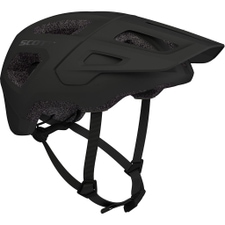 ScottArgo Plus Bike Helmet Black MattMSRP 119,95 €84,95 €Available Sizes:M/L S/M
ScottArgo Plus Bike Helmet Black MattMSRP 119,95 €84,95 €Available Sizes:M/L S/M - - 10 %new
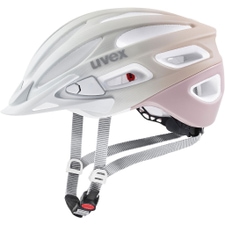 UvexTrue CC Bike Helmet Sand / Dust Rose Matt WomenMSRP 99,95 €89,95 €Available Sizes:58
UvexTrue CC Bike Helmet Sand / Dust Rose Matt WomenMSRP 99,95 €89,95 €Available Sizes:58 - - 10 %new
 GiroSource MIPS Bike Helmet Matte Portaro GreyMSRP 149,95 €134,95 €Available Sizes:SML
GiroSource MIPS Bike Helmet Matte Portaro GreyMSRP 149,95 €134,95 €Available Sizes:SML - - 25 %
 SmithConvoy MIPS Bike Helmet MossMSRP 79,95 €59,95 €Available Sizes:L
SmithConvoy MIPS Bike Helmet MossMSRP 79,95 €59,95 €Available Sizes:L - - 8 %new
 ScottARX Plus Bike Helmet White / BlackMSRP 119,95 €109,95 €Available Sizes:SML
ScottARX Plus Bike Helmet White / BlackMSRP 119,95 €109,95 €Available Sizes:SML - - 50 %
 ScottVivo Plus MIPS Bike Helmet White / BlackMSRP 129,95 €64,95 €Available Sizes:L
ScottVivo Plus MIPS Bike Helmet White / BlackMSRP 129,95 €64,95 €Available Sizes:L - - 10 %new
 GiroSource MIPS Bike Helmet Matte Black FadeMSRP 149,95 €134,95 €Available Sizes:SML
GiroSource MIPS Bike Helmet Matte Black FadeMSRP 149,95 €134,95 €Available Sizes:SML - new
 Sweet ProtectionFalconer 2Vi MIPS Bike Helmet Matte Black248,95 €Available Sizes:SML
Sweet ProtectionFalconer 2Vi MIPS Bike Helmet Matte Black248,95 €Available Sizes:SML - - 34 %
 POCKortal Race MIPS Bike Helmet Fluorescent Orange Avip / Uranium Black MattMSRP 249,95 €164,95 €Available Sizes:S
POCKortal Race MIPS Bike Helmet Fluorescent Orange Avip / Uranium Black MattMSRP 249,95 €164,95 €Available Sizes:S - - 40 %
 AlpinaKamloop Bike Helmet Black Neon / Yellow MattMSRP 99,95 €59,95 €Available Sizes:64
AlpinaKamloop Bike Helmet Black Neon / Yellow MattMSRP 99,95 €59,95 €Available Sizes:64 - - 10 %new
 GiroHelios Spherical Bike Helmet Matte Black / RedMSRP 259,95 €233,95 €Available Sizes:SML
GiroHelios Spherical Bike Helmet Matte Black / RedMSRP 259,95 €233,95 €Available Sizes:SML  POCVentral Lite Bike Helmet Uranium Black Matt269,95 €Available Sizes:L
POCVentral Lite Bike Helmet Uranium Black Matt269,95 €Available Sizes:L- new
 Sweet ProtectionFalconer 2Vi MIPS Bike Helmet Woodland248,95 €Available Sizes:SML
Sweet ProtectionFalconer 2Vi MIPS Bike Helmet Woodland248,95 €Available Sizes:SML - - 10 %new
 GiroHelios Spherical Bike Helmet Matte Black FadeMSRP 259,95 €233,95 €Available Sizes:SML
GiroHelios Spherical Bike Helmet Matte Black FadeMSRP 259,95 €233,95 €Available Sizes:SML



Riding without a helmet simply...
unbelievable! It was not earlier than 2003 that helmets became mandatory in the regulations of the Tour de France. Very slowly and only seven years after the deadly accident of Fabio Casartelli at the Col de Poret the change to a safe bicycle racing took place.
Crashes are part of cycling, they happen more or less often or they are simply not self-inflicted. Whatever the case may be! What happens during a fall takes place in fractions of a second and is highly unlikely to be controlled. Calculating the probability of injury is like rolling the dice. All the more we should think about reducing our own risk of serious injury.
Yes, of course! A skull bone can withstand a lot, otherwise all children would wear a helmet on the playground. But! We don't really have much of a crumple zone on our heads except for some skin and hair. If an impact occurs, there are forces at work and many variables that are decisive for the degree of injury.
Please. Wear a helmet when riding your bike, whether it's just on the way to the bakery or riding uphill in a group. A fall is often unpredictable and usually happens when it seems impossible.
To help you find the right bike helmet for you, we've got this guide!

The blueprint: Helmet
Maximum performance for the matching discipline
Just as there are various sub-sports of cycling, there are also various helmet designs. For simplicity, we distinguish between three forms.
Half shell helmet
This groups together all helmets that provide protection from the back of the head over the sides to the forehead. A large part of the bicycle helmets are half-shell helmets. Advantage of this form in combination with the Fabrics used is a low weight and good ventilation with high safety.
Fullface helmet
This form is mainly worn in downhill or mixed disciplines such as Enduro and offers comprehensive protection. Due to the rider safety in the Enduro World Series, there are now many chin bar helmets with micro shells and large vents that can be worn without problems even when riding uphill.
Variable helmet
This is a hybrid design of half-shell and chin bar helmets. The special feature is the removable chin bar, which, depending on the model and manufacturer, provides fresh air in the face with a few simple steps. However, this type of helmet has a somewhat reduced stability compared to fixed chin bar helmets, as the locking mechanism separates the shell from the bar.
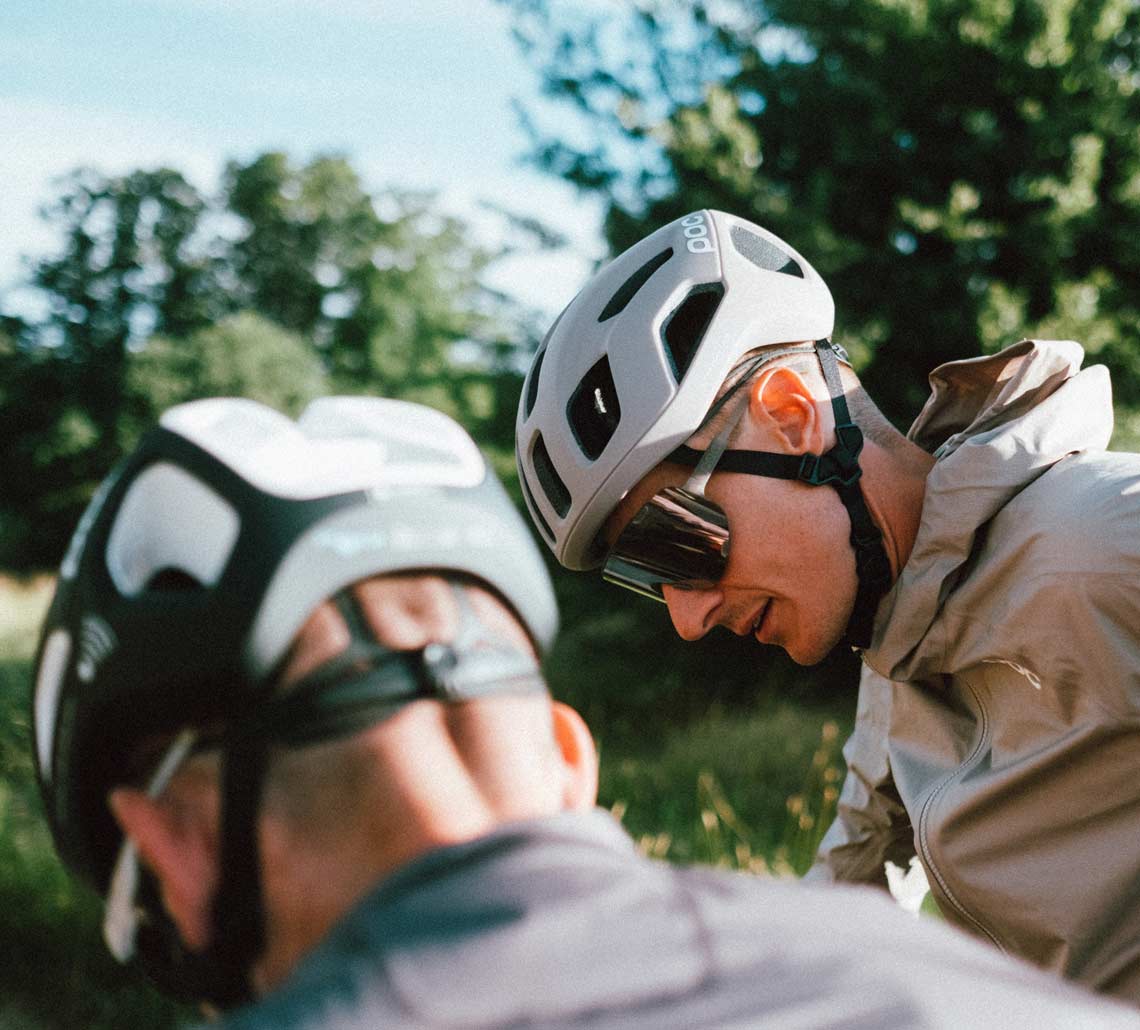
A question of material composition
How can such a plastic and rigid foam bicycle helmet protect my head? Modern bicycle helmets consist of a multi-layer construction. The outermost shell is made of either the lightweight microshell or the harder hardshell. Both fabrics are based on a plastic base that varies in density and thickness. Underneath the shell is the actual crush zone, the rigid foam made of EPS. Both components are glued together or directly connected in the Inmold process. Removable pads provide comfort between the head and helmet.
The outer shell distributes the impact energy to the rigid foam during a fall and dissipates additional rotational forces through its smooth surface. The EPS absorbs the impact energy by compressing or breaking the Fabrics.
In addition, many bike helmets are already equipped with MIPS technology. The "Multi-Directional Impact Protection System" reduces the rotational force on the head in the event of an impact, in addition to minimizing the friction of the outer shell, and reduces the risk of craniocerebral trauma.
Notice! You need not be afraid of heat accumulation and sweat! The design of the bike helmets provides optimal ventilation and moisture wicking. Many pads are equipped with antibacterial fabric and provide a fresh wearing comfort for a long time.
How long does a bicycle helmet last?
Exactly one fall! Provided it has served its purpose in the process. Otherwise, most EPS fabrics lose their ability to dissipate energy into deformation after five years. This is due to the normal aging process of foams and plastics, as well as accelerating factors such as UV radiation.

Attention expiration date!
Fit and Co.
When buying a helmet, pay particular attention to the correct fit. In our article description you will always find the helmet size in connection with the head circumference. However, that is not all! We can not promise you on this basis that the helmet also fits perfectly. If your order comes to your home, this assessment is up to you.
We will help you step by step!
1. Put on the helmet and check in the open state of the closure, whether to foam and the
pads have somewhere clearance or the helmet disproportionately wide or narrow on your head. The helmet should fit like a second skin on your head. If it fits but pinches at points, you should go for another model..
2. Slowly start to close the fastener until the helmet is comfortably fixed. Check again to
see if you feel any pressure at any point. Does that fit? Then go on!
3. Almost ready! The helmet definitely fits! Now you just have to adjust the straps.
Make sure that the Y-adjustment sits evenly and about 1 cm below the ears and still above the jawbone. When adjusting the width of the straps, you should still have about two fingers of leeway or be able to really yawn without it bothering your neck.

These bike helmets you will find in our shop …
For sure we have helmets for everyone, in various colors and with a wide price range! In addition, all helmets are suitable for use on the e-bike. The following classification should help you a little to get an overview of the areas of use.
Road, gravel and cross country helmets
You like to ride on 25 to 28 mm tire width or also with coarse profile and lower link. Or do you belong to the fraction Race-XC? Here you are right! Most helmets in this category have no visor to minimize wind resistance and block the field of vision in very sporty riding positions. In addition, the helmets are extremely lightweight and well ventilated.
Enduro & downhill
Brake on technical trails and massive airtime in the park? Go for the enduro or downhill helmet. Most helmets in this category are - if they are not already models with chin bar - built with extended protection for the back of the head. And as befits the helmets, of course, have a visor.
For the daily commute
You are every day on the bike in traffic? We have some items on offer that have an integrated light system. So you always stay visible and are safe and also extremely fashionable on the road!
So? What else argues against a bicycle helmet? Absolutely nothing!

